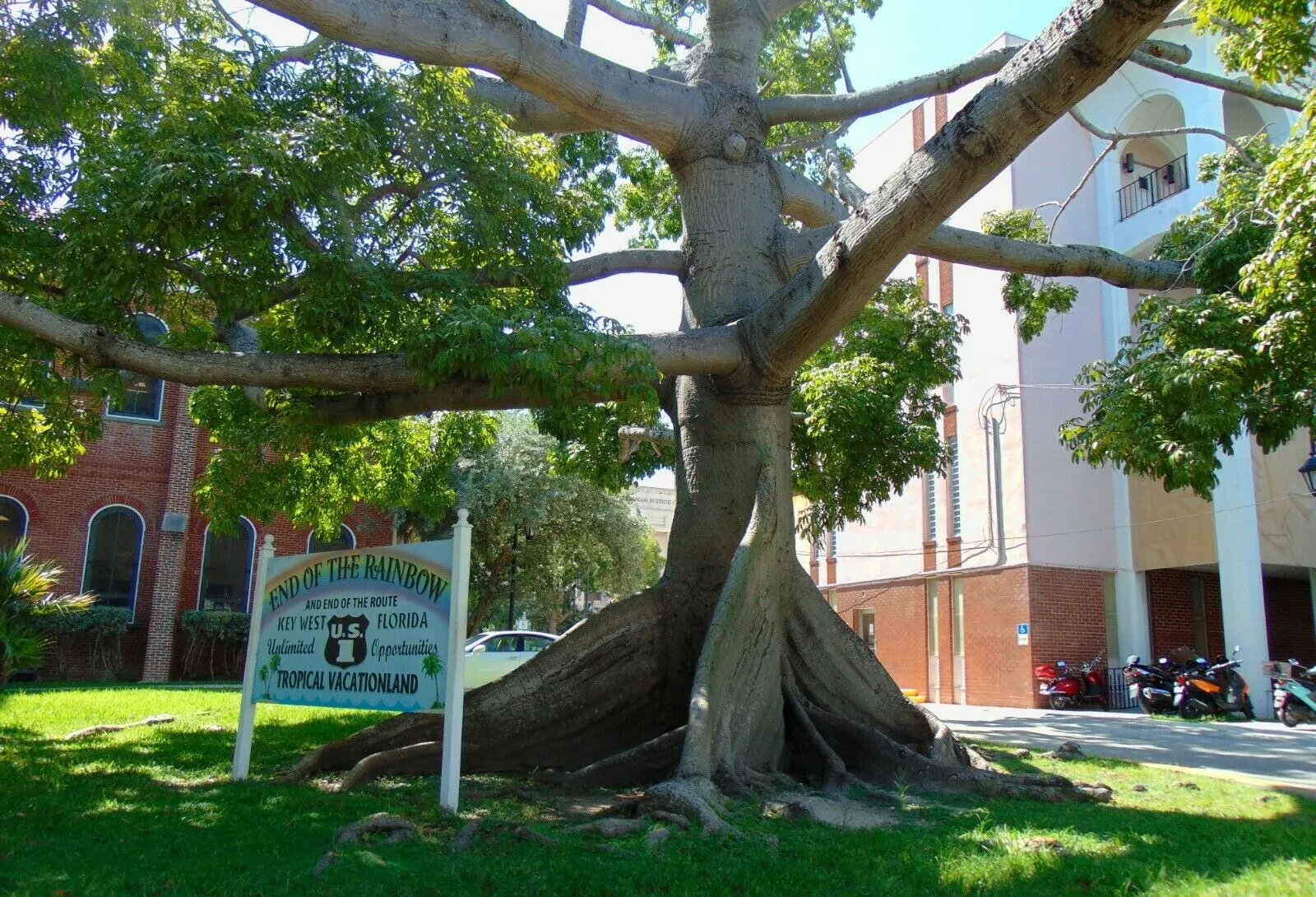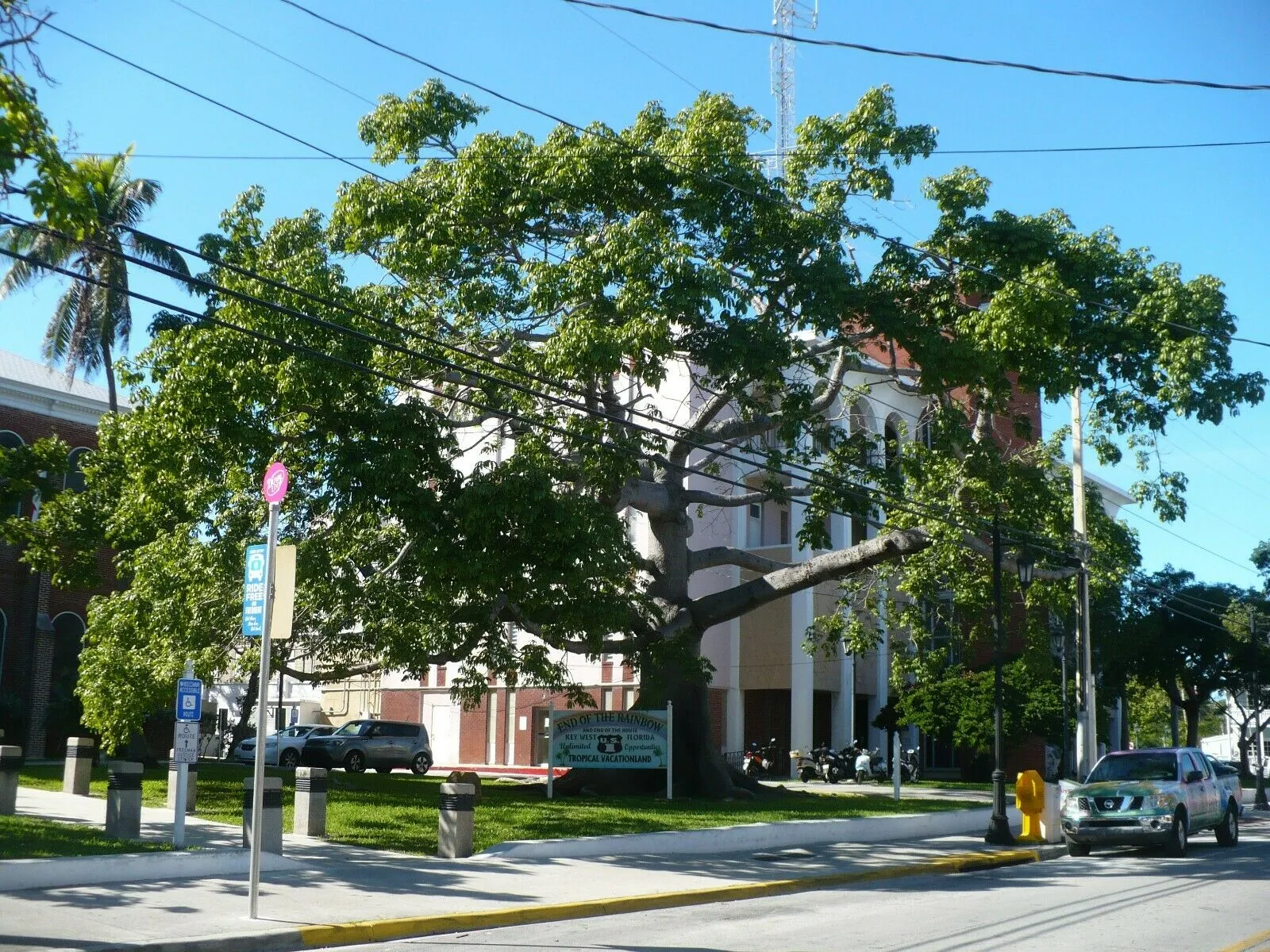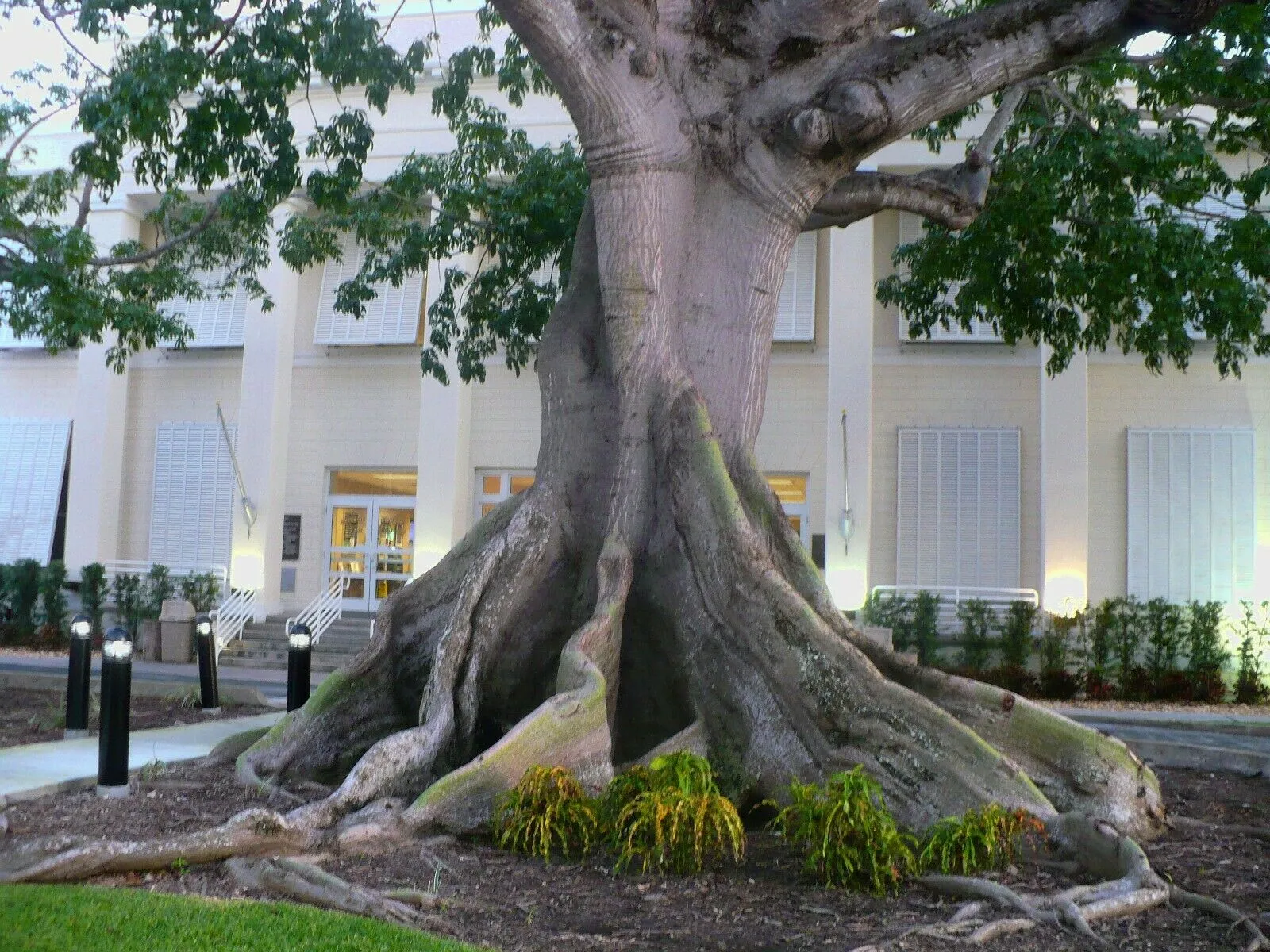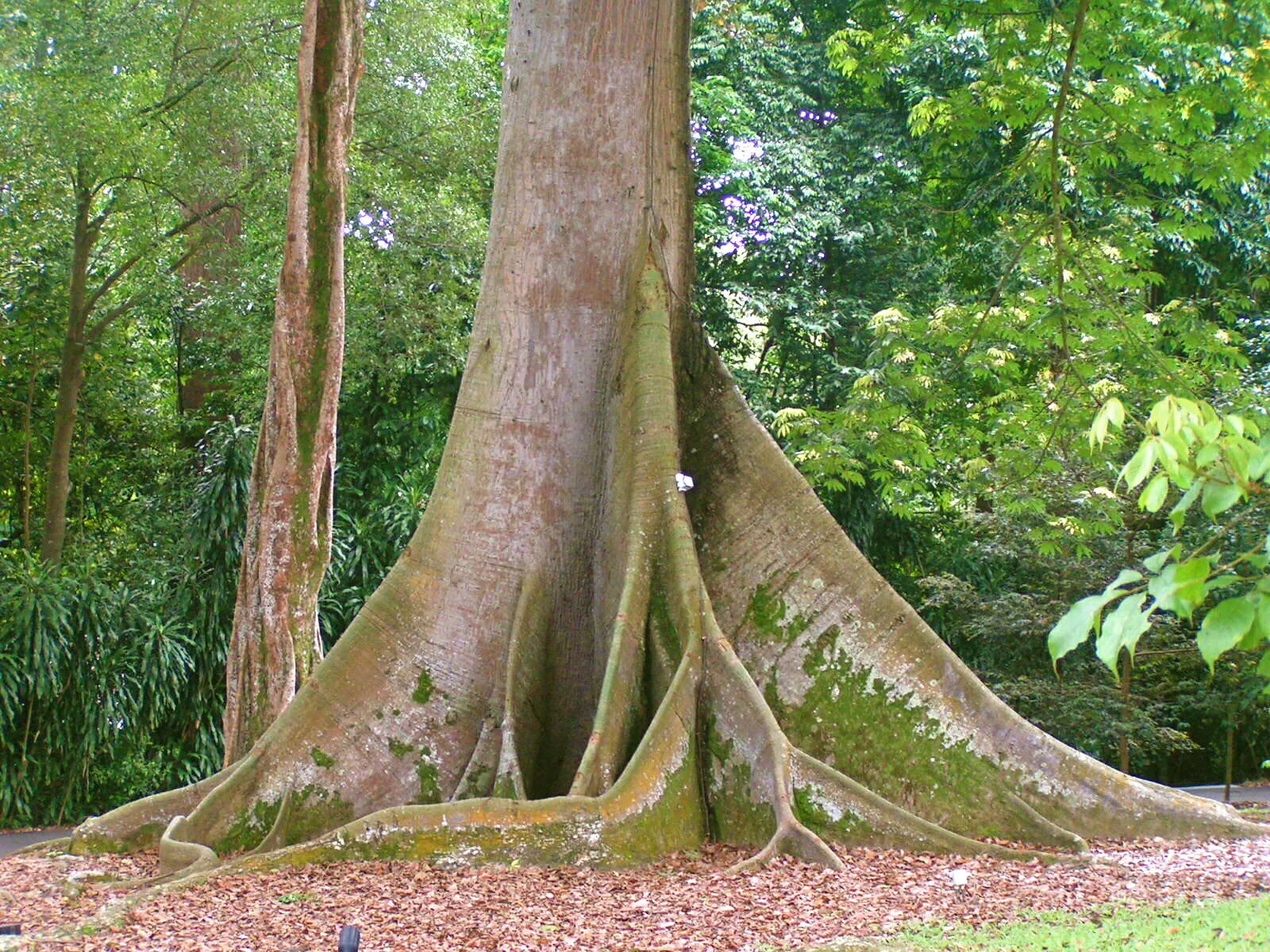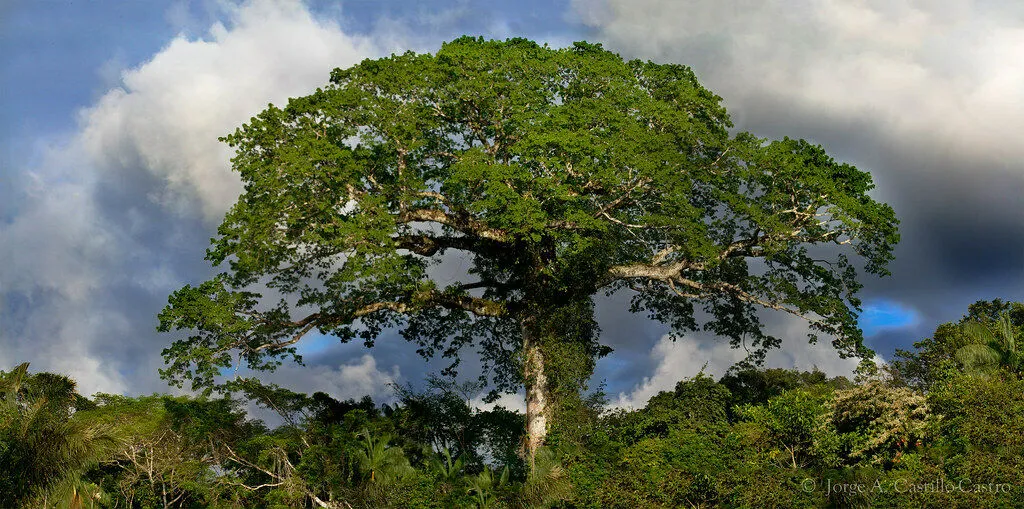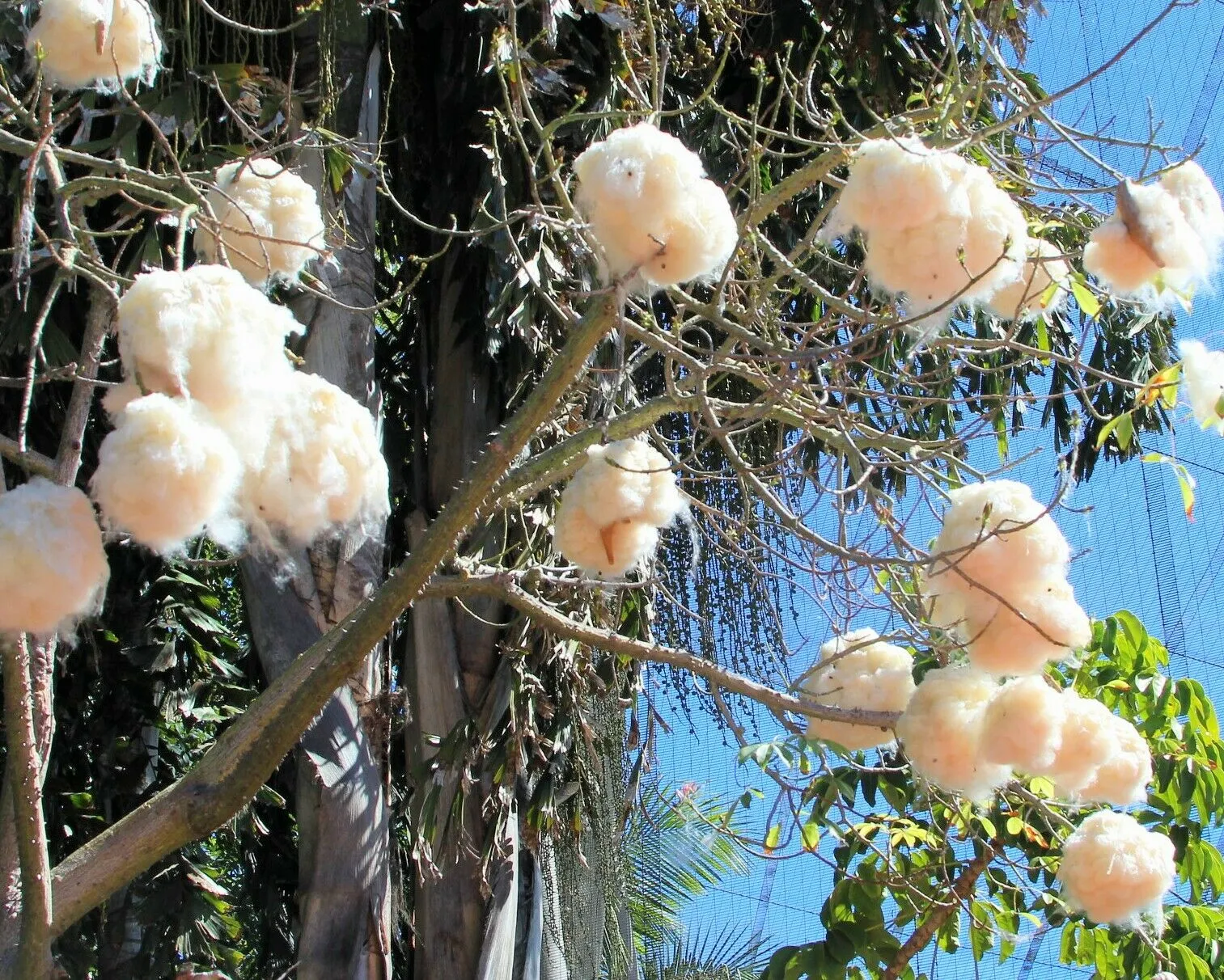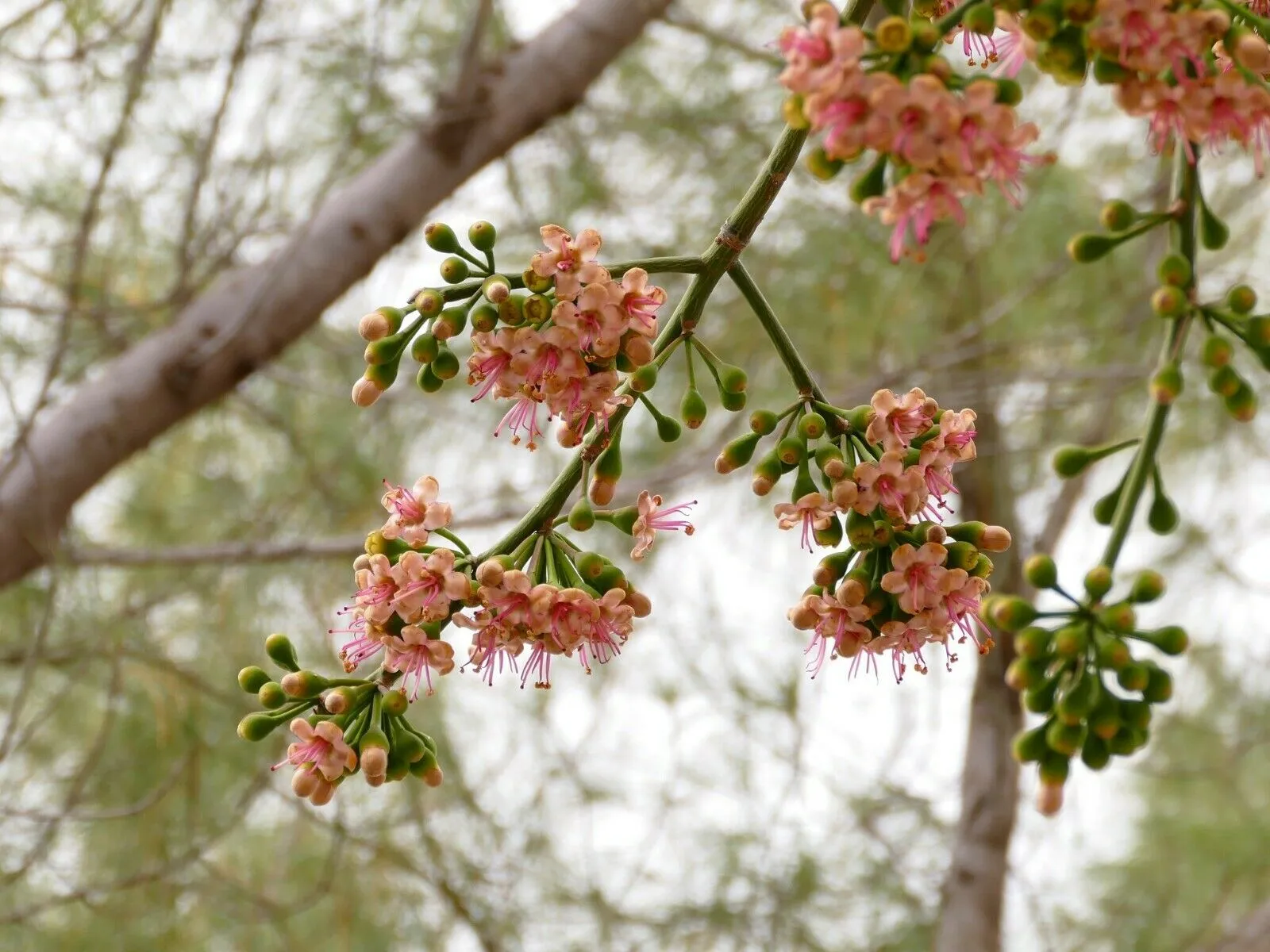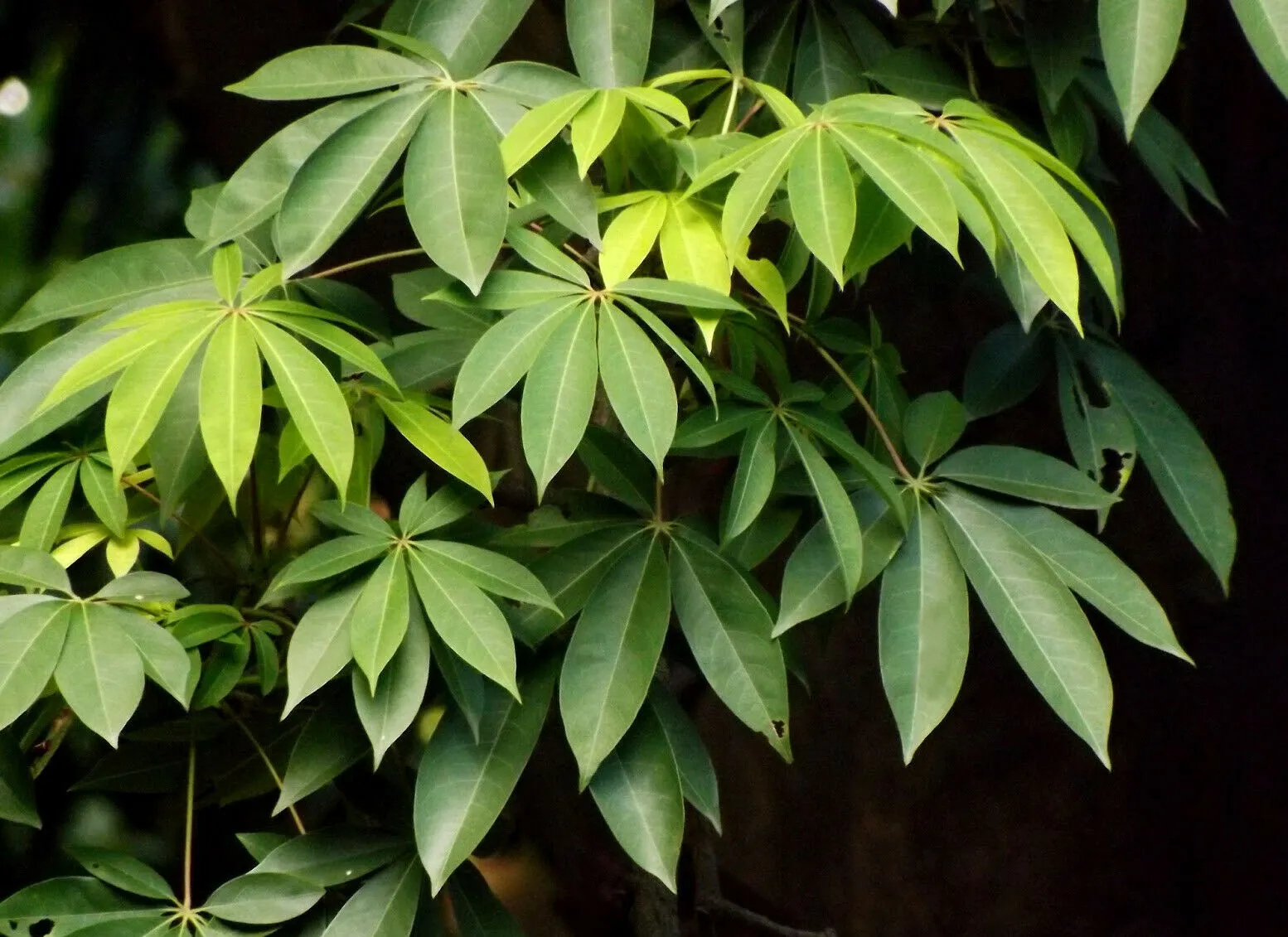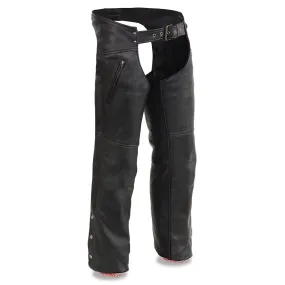Ceiba pentandra, commonly known as kapok or silk-cotton tree, is a fast-growing (to 13’ per year), deciduous tropical tree of the Bombax family that typically matures to 75-125’, but infrequently soars to as much as 230’ tall with a broad-spreading, somewhat flattened crown consisting of nearly horizontal branching. This large tree is perhaps best known as being the source of kapok which is a cotton-like, water-resistant fiber harvested from the seed pods. Kapok was at one time a popular down-like substance used as a stuffing for mattresses, life jackets, pillows, upholstery and as insulation. It is native to tropical America. It is now common in many areas of the tropics around the world.
Massive, straight, often spiny trunks on mature trees have wide spreading buttresses at the base. Trunk diameter on average size trees will reach 6’ at maturity, but may extend to as much as 9’ or more on large trees. Palmate compound leaves have 5-9 leaflets (each 3-7” long) with all leaflets extending outward from a single point at the base of the leaf. Creamy white to pink flowers bloom in clusters before the leaves appear. Flowers have bell-shaped calyces with five shallow lobes, five pubescent, oblong to spatulate petals, and 5 stamens fused into a tube. The flowers attract bats which in turn help pollinate the flowers. Fruits are ellipsoid woody capsules (3-6” long and 2” diameter) each of which contains up to 200 seeds embedded in cotton-like kapok. Capsules split open when ripe to release the silky seeds which are easily distributed by wind.
Winter hardy to USDA Zones 10-12. Fast-growing tree. Best sited in moist well-drained soils in full sun. Water needs vary during the year. Trees appreciate abundant moisture during their vegetative period, but prefer much less moisture in winter during the dry season (December – February in southern Florida) when trees have lost most of their leaves or are deciduous. Flowers typically begin blooming in February near the end of the dry season, followed by fruiting. New foliage typically begins to appear shortly after flowering.
Growing Instructions
The seeds have a hard seed coat that has to be treated, or scarified, in order for water to enter the seeds so that they can sprout.
- Scarify the seeds by nicking or sanding the seed coat.
- Soak the seed in water for 24 hours.
- Prepare a mixture of half potting soil and half sand, perlite or vermiculite.
- Water the mixture so that it is moist but not wet.
- Sow the seeds ¼ inch deep in the soil.
- Water the seeds.
- Place the pots in an area with warm temperatures in full sun or part shade.
- When the seedlings are a few inches tall, they can be transplanted.

